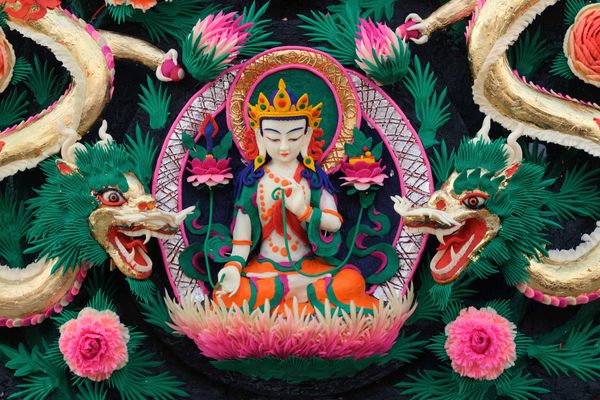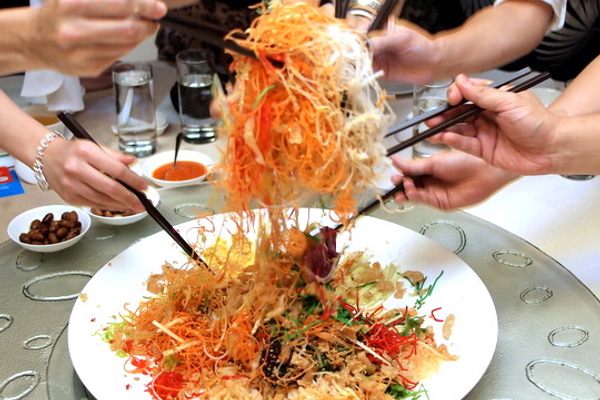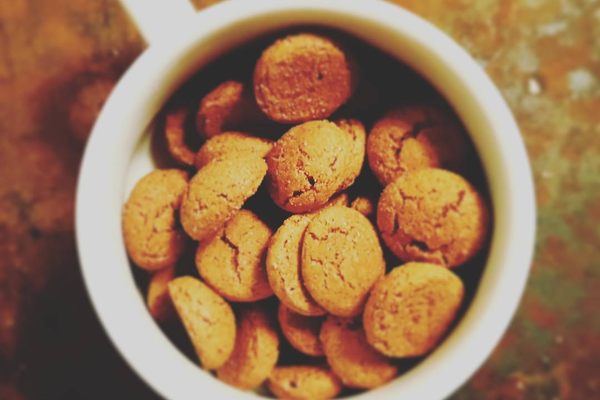Sweets
Khapse
On Tibetan New Year, deep-fried cookies take the form of auspicious symbols and festive snacks.
Around February or March, Tibetan Buddhists celebrate Losar, a New Year’s festival that lasts 15 days. Participants create elaborate altars in honor of the occasion. These arrays include, among other sacred objects, a number of food-based offerings. Temples display intricate butter sculptures and butter-fueled lamps, both made from yak’s milk. At home, celebrants’ altars include dried fruit, candies, and mounds of hand-formed, deep-fried cookies called khapse.
Tibetans call these beloved cookies “mouth-eat,” which gets straight to the point. Cooks prepare massive quantities of khapse as offerings, as festive gifts, and to keep their mouths busy while preparing other holiday dishes in the kitchen. During Losar, khapse are often enjoyed with sweet tea or Tibetan butter tea (yes, this means dipping deep-fried cookies in butter-filled liquid).
But not all khapse are created for teatime. Each cook molds a symbolic, scorpion-shaped cookie first. This initial offering is not made for snacking, but to ward off bad luck, including kitchen mishaps. Families hang the auspicious animal in their kitchen for the duration of Losar. Cooks form the rest of the dough into a variety of shapes. An especially long khapse, known as a “donkey’s ear” (bhungue amcho), goes on the Losar altar, as do cookies shaped like lotus flowers, braids (mukdung), and crispy circles (bulug). Varied little shapes made solely for snacking are known as kaptog.
Tibetans also fry up heaps of the crunchy treat during other noteworthy occasions, such as weddings. The details vary from chef to chef: One might fry salted dough in mustard oil, while another will dust lard-rich, sweet dough with powdered sugar. The versatile cookies range in size, shape, and flavor, but among Tibetans, their celebratory significance is universal.
Written By
 rachelrummel
rachelrummel
Sources
- www.yowangdu.com/tibetan-food/khapse.html
- www.jamyangnorbu.com/blog/2010/01/30/dipping-a-donkey-ear-in-butter-tea/
- simplytibetan.com/2012/01/08/khabsey/
- books.google.com/books?id=L6xVDwAAQBAJ&pg=PT196&lpg=PT196&dq=what+is+mukdung&source=bl&ots=Tv5kRUNrs5&sig=OcURCGgAS4kcENxJbHxgDhKCQxk&hl=en&sa=X&ved=2ahUKEwi1vJeV8M_fAhWKuVkKHZHgBigQ6AEwDnoECAsQAQ#v=onepage&q=what%20is%20mukdung&f=false
- www.nytimes.com/2012/02/22/dining/momos-tibetans-forbidden-special-treat.html
- www.yowangdu.com/tibetan-food/khapse-recipe-bulug.html













